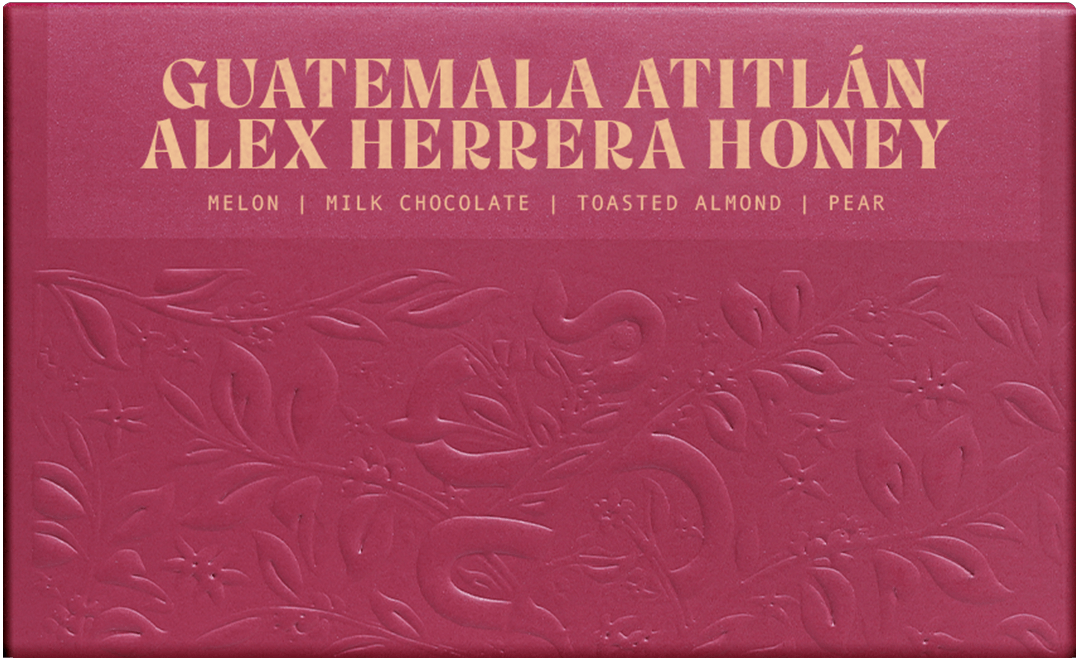Story
The prevalence of Guatemalan coffee over the last few years within the specialty market has waned slightly. Small farms facing financial difficulties and climate change have forced small holders to sell their farms, consolidating those coffees to larger commercial operations. Looking at Huehuetenango, this has been true over the last few seasons, especially as cost of production gets closer (or exceeds) the prices that importers are willing to pay. Despite these challenges, Guatemalan coffee persists. With soaring elevation, developing infrastructure, and rich volcanic soil, coffees from Guatemala are some of the highest quality coming from Central America. With this in mind, we have partnered with our friend (and World Barista Champion) Raul Rodas to aid in sourcing coffees outside of Huehuetenango. With his help, we visited in April of ‘23 to establish new relationships while utilizing a cupping lab in a mill and driving all over the furthest reaches of Guatemala. What we found together were altogether unknown coffees and regions which we had never sourced from before. We put together a full container load of microlots ranging from anaerobic naturals to dynamic and bright washed coffees.
PAMPOJILÁ
Finca Pampojilá is located on the slopes of the Atitlán Volanco, where they have been producing coffee for over 100 years. Over this time, they’ve intercropped new species into the farm in order to provide shade and to grow food within the coffee trees. This focus on intercrop maintains biodiversity as well as the health of the ecosystem. With this initiative, they are certified by the Rainforest Alliance, where they undergo rigorous audits on a yearly basis. This commitment to sustainability and quality maintains their rigorous standards, and this effort shows in the coffee. Their coffees are consistent and clear, no doubt due to the meticulous processing and agronomical standards they employ. The values they hold are as follows: “Pampojilá brings some of the finest coffee to the world through mindful and responsible practices, prioritizing care for its cultivation and for its local farmers and labor Through the thoughtful selection of inputs, we are regenerating the soil using vermicompost and other natural by-products of our farms. We believe in corporate social responsibility as a guiding principle. We provide competitive wages, a safe working environment and access to health care and education for our workers and their families.” We are thrilled to partner with such an endeavor as theirs, and hope to continue across the seasons.
HONEY PROCESSED COFFEE
Honey processed coffees are tricky. Oftentimes the result of this process ends up being the same as if they were washed, but other times they end up much worse. The process begins much like washed coffee, where the cherries are depulped, but then the process is halted. Instead of sending the seeds to the fermentation tanks where yeast and microbes break down the sticky mucilage, the honey processed coffee is sent straight to the drying bed, where they’re pop dried with the mucilage left on. This leaves some of the fruit left partially on, ideally imparting some sucrose and fructose as it continues to ferment (slowly, in this case). Honey process gets its name from the sticky fruit left on the outside of the seed, but it is easier to think about when it’s referred to as a ‘pulped natural,’ or even ‘partially washed.’ Differing levels of fermentation and even the type of depulper used to strip the cherry from the seed can influence the color of the dried coffee. As the process's popularity has spread, new names for the levels of processing have spread with it. You will see the levels generally follow the trend from white honey, all the way to black honey.
White honey usually follows the trend that most of the mucilage is removed, followed by a light and short fermentation with rigorous movement during drying. This exposes most of the parchment on the seed, which is a yellow to white color.
Yellow honey has a bit more mucilage left on the seed, as well as a bit more activity in fermentation. The mucilage left on will turn a golden yellow color as the oxidation of fermentation takes place. These are usually shade-dried and turned just a few times per day of drying.
Red honey has much of the seeds mucilage left on, with just the thin cherries skin removed during depulp. Heavily laden drying beds or patios become difficult to turn with the large mass of sticky fruit and seeds, which creates the perfect conditions for slow oxidation and lots of microbial activity. All this activity, combined with the fruit left on the outside of the seed, turns the dried parchment a rusty red color.
Black honeys are considered the most ‘fermented’ of the honey process. This is when the terroir of the coffee takes a bit of a backseat, as the sugars from the fruit ferment and impart a winey flavor and heavier texture to the cup. Black honey coffees are seldom moved on the drying patios or beds, where they are fermented for extended periods of time. During this slow fermentation, the mucilage goes through all the phases listed above, before it transitions from a rusty red to a red-black color.





